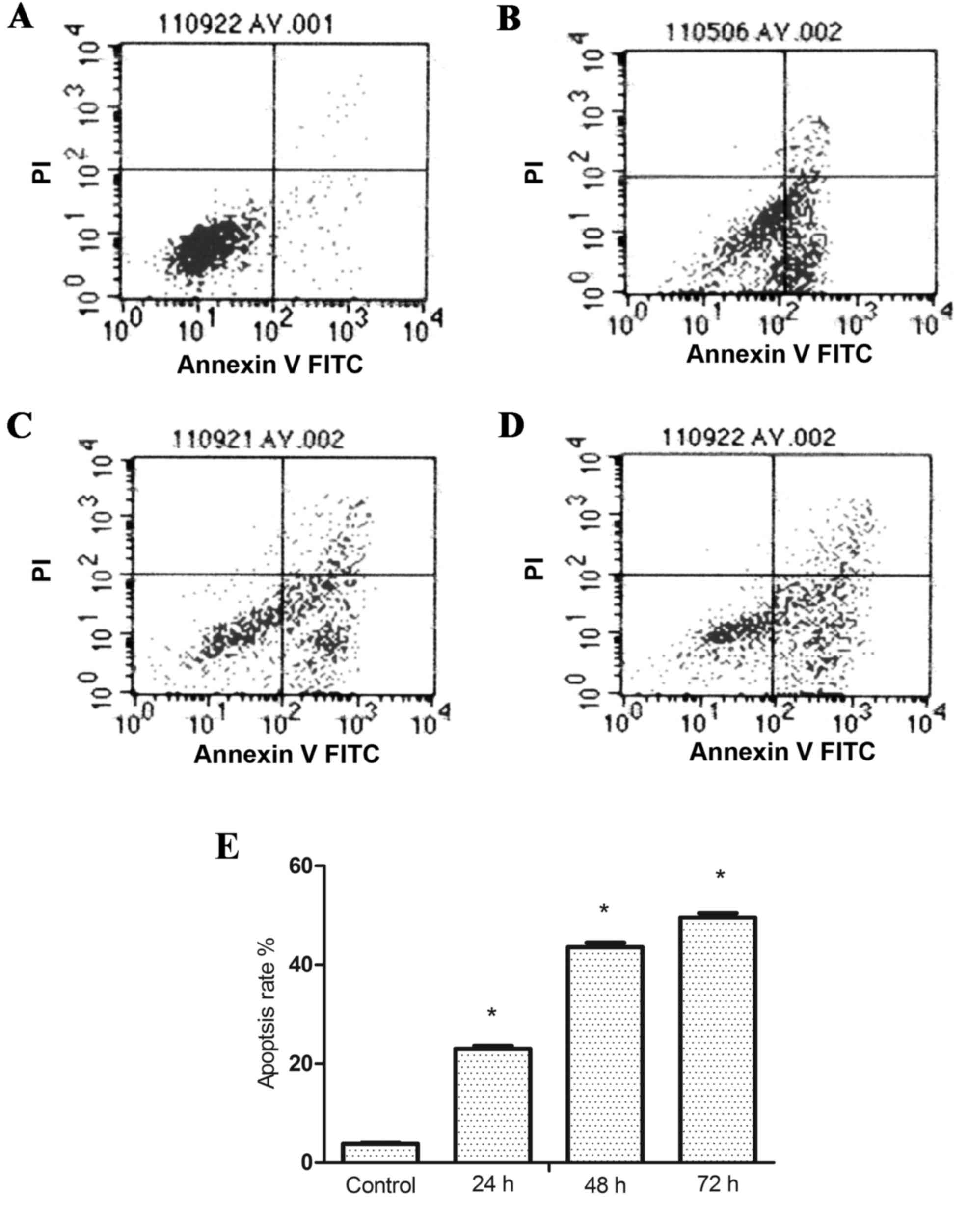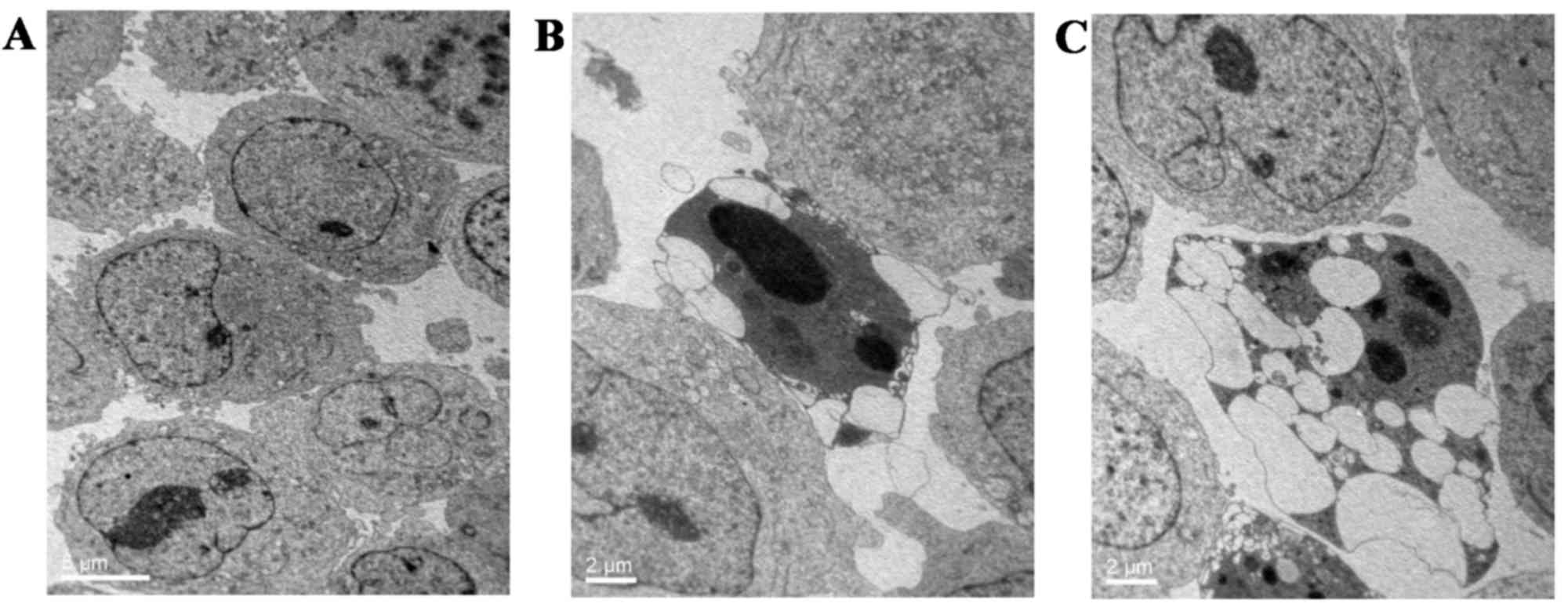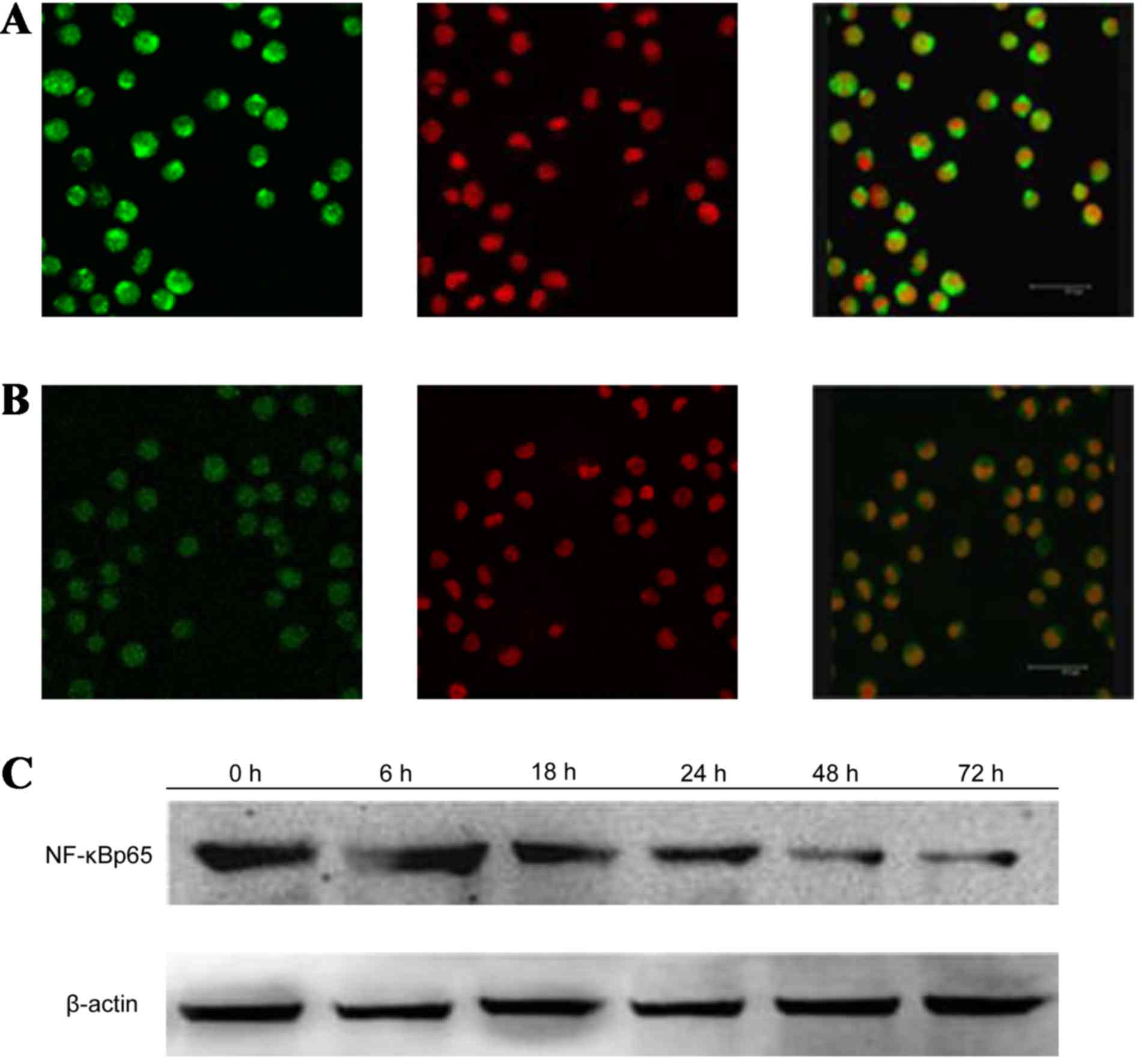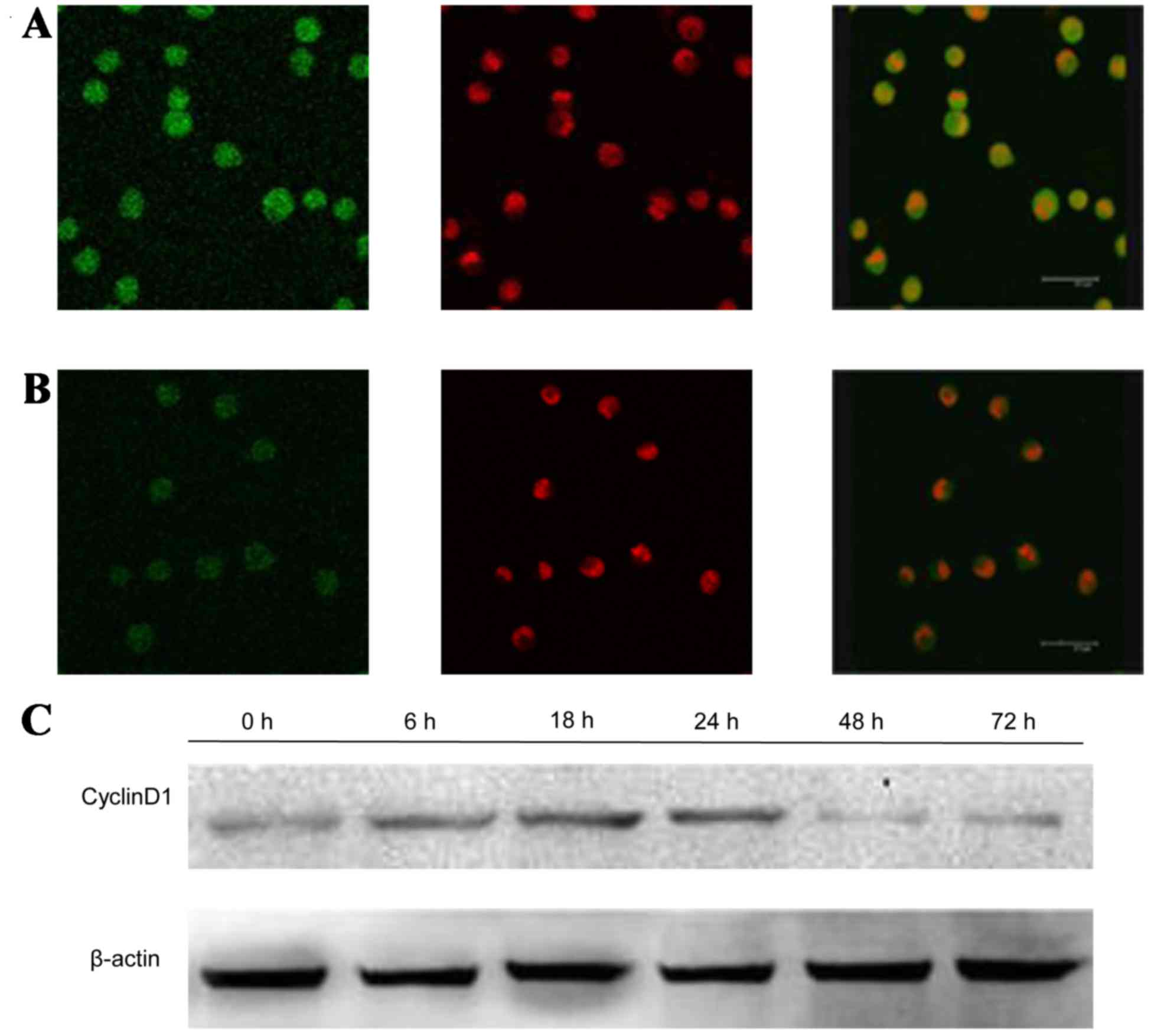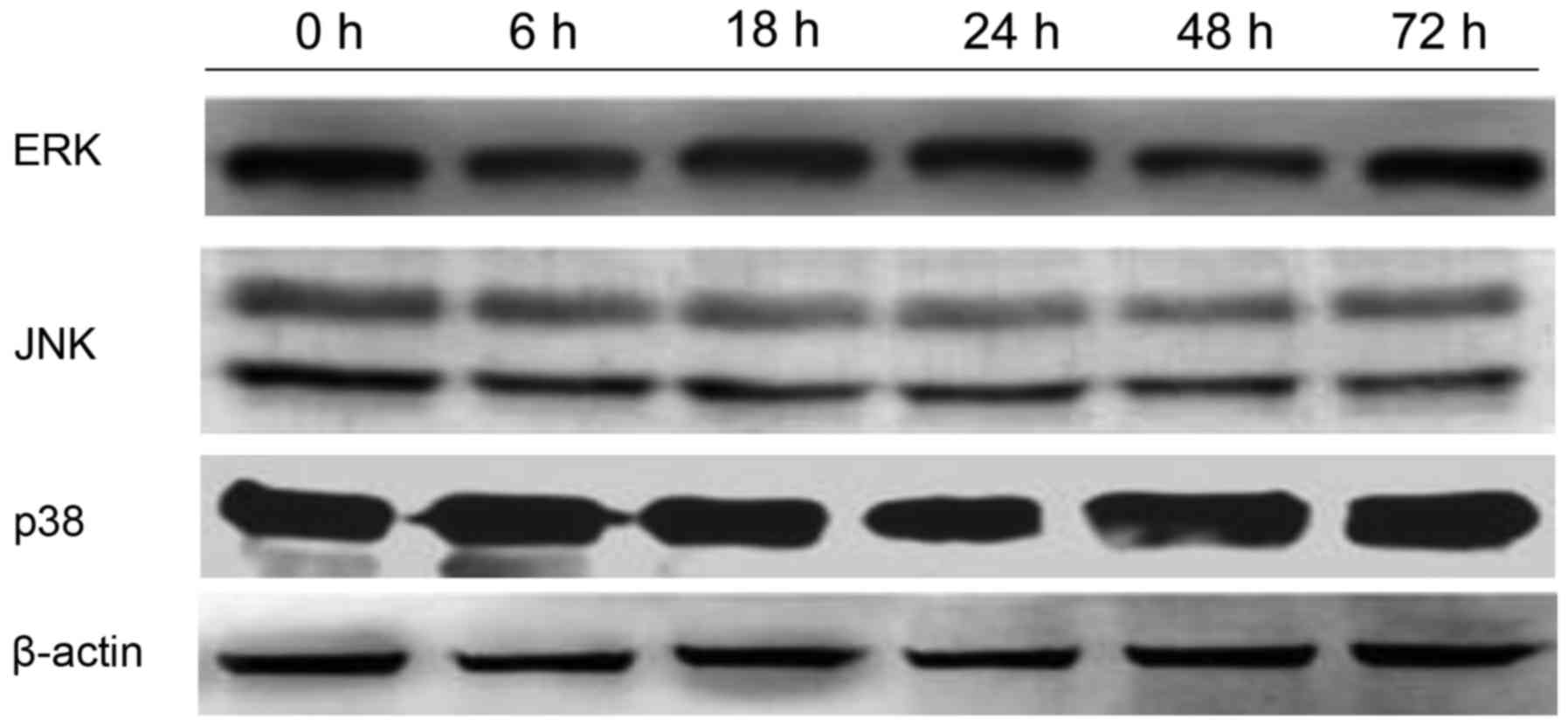|
1
|
Levis M: Quizartinib in acute myeloid
leukemia. Clin Adv Hematol Oncol. 11:586–588. 2013.PubMed/NCBI
|
|
2
|
Cesaro S, De Filippi P, Di Meglio A, Leszl
A, Donska S, Zaccaron A, Cagioni C, Galavotti R, Danesino C, Aprili
F, et al: Different outcomes of allogeneic hematopoietic stem cell
transplant in a pair of twins affected by juvenile myelomonocytic
leukemia. Int J Hematol. 99:208–212. 2014. View Article : Google Scholar : PubMed/NCBI
|
|
3
|
Lu J, Huang X, Bao L, Jiang H, Zhu H and
Jiang B: Treatment outcomes in relapsed acute promyelocytic
leukemia patients initially treated with all-trans retinoic acid
and arsenic compound-based combined therapies. Oncol Lett.
7:177–182. 2014.PubMed/NCBI
|
|
4
|
Hait WN, Choudhury S, Srimatkandada S and
Murren JR: Sensitivity of K562 human chronic myelogenous leukemia
blast cells transfected with a human multidrug resistance cDNA to
cytotoxic drugs and differentiating agents. J Clin Invest.
91:2207–2215. 1993. View Article : Google Scholar : PubMed/NCBI
|
|
5
|
Yang G, Li X, Li X, Wang L, Li J, Song X,
Chen J, Guo Y, Sun X, Wang S, et al: Traditional Chinese medicine
in cancer care: A review of case series published in the chinese
literature. Evid Based Complement Alternat Med. 2012:7510462012.
View Article : Google Scholar : PubMed/NCBI
|
|
6
|
Luo Y, Zhang P, Zeng HQ, Lou SF and Wang
DX: Ginsenoside Rg3 induces apoptosis in human multiple myeloma
cells via the activation of Bcl-2-associated X protein. Mol Med
Rep. 12:3557–3562. 2015.PubMed/NCBI
|
|
7
|
Lozzio CB and Lozzio BB: Human chronic
myelogenous leukemia cell-line with positive Philadelphia
chromosome. Blood. 45:321–334. 1975.PubMed/NCBI
|
|
8
|
Gambari R and Fibach E: Medicinal
chemistry of fetal hemoglobin inducers for treatment of
beta-thalassemia. Curr Med Chem. 14:199–212. 2007. View Article : Google Scholar : PubMed/NCBI
|
|
9
|
Schnetzke U, Fischer M, Frietsch JJ,
Finkensieper A, Clement JH, Hochhaus A and La Rosée P: Paradoxical
MAPK-activation in response to treatment with tyrosine kinase
inhibitors in CML: Flow cytometry loses track. Cytometry B Clin
Cytom. 86:229–235. 2014. View Article : Google Scholar : PubMed/NCBI
|
|
10
|
Qi M and Elion EA: MAP kinase pathways. J
Cell Sci. 118:(Pt 16). 3569–3572. 2005. View Article : Google Scholar : PubMed/NCBI
|
|
11
|
Kang CD, Yoo SD, Hwang BW, Kim KW, Kim DW,
Kim CM, Kim SH and Chung BS: The inhibition of ERK/MAPK not the
activation of JNK/SAPK is primarily required to induce apoptosis in
chronic myelogenous leukemic K562 cells. Leuk Res. 24:527–534.
2000. View Article : Google Scholar : PubMed/NCBI
|
|
12
|
Zhao LY, Zhang J, Guo B, Yang J, Han J,
Zhao XG, Wang XF, Liu LY, Li ZF, Song TS and Huang C: MECP2
promotes cell proliferation by activating ERK1/2 and inhibiting p38
activity in human hepatocellular carcinoma HEPG2 cells. Cell Mol
Biol (Noisy-le-grand) Suppl. 59:OL1876–OL1881. 2013.
|
|
13
|
Pal P, Kanaujiya JK, Lochab S, Tripathi
SB, Bhatt ML, Singh PK, Sanyal S and Trivedi AK: 2-D gel
electrophoresis-based proteomic analysis reveals that ormeloxifen
induces G0-G1 growth arrest and ERK-mediated apoptosis in chronic
myeloid leukemia cells K562OL. Proteomics. 11:1517–1529. 2011.
View Article : Google Scholar : PubMed/NCBI
|
|
14
|
Obata T, Brown GE and Yaffe MB: MAP kinase
pathways activated by stress: The p38 MAPK pathway. Crit Care Med.
28:(Suppl 4). N67–N77. 2000. View Article : Google Scholar : PubMed/NCBI
|
|
15
|
Park EJ, Kiselev E, Conda-Sheridan M,
Cushman M and Pezzuto JM: Induction of apoptosis by
3-amino-6-(3-aminopropyl)-5,6-dihydro-5,11-dioxo-11H-indeno
[1,2-c]isoquinoline via modulation of MAPKs (p38 and c-Jun
N-terminal kinase) and c-Myc in HL-60 human leukemia cells. J Nat
Prod. 75:378–384. 2012. View Article : Google Scholar : PubMed/NCBI
|
|
16
|
Zhang H, Wang HF, Liu Y, Huang LJ, Wang ZF
and Li Y: The haematopoietic effect of Panax japonicus on blood
deficiency model mice. J Ethnopharmacol. 154:818–824. 2014.
View Article : Google Scholar : PubMed/NCBI
|
|
17
|
Li SS, Jin YP, Yao CL and Wang YP:
Research achievements on structures and activities of
polysaccharides from Panax ginseng. Zhongguo Zhong Yao Za Zhi.
39:4709–4715. 2014.(In Chinese). PubMed/NCBI
|
|
18
|
Wang Z, Meng J, Xia Y, Meng Y, Du L, Zhang
Z, Wang E and Shan F: Maturation of murine bone marrow dendritic
cells induced by acidic Ginseng polysaccharides. Int J Biol
Macromol. 53:93–100. 2013. View Article : Google Scholar : PubMed/NCBI
|
|
19
|
Kim HJ, Kim MH, Byon YY, Park JW, Jee Y
and Joo HG: Radioprotective effects of an acidic polysaccharide of
Panax ginseng on bone marrow cells. J Vet Sci. 8:39–44. 2007.
View Article : Google Scholar : PubMed/NCBI
|
|
20
|
Bhattacharyya S, Ghosh J and Sil PC: Iron
induces hepatocytes death via MAPK activation and
mitochondria-dependent apoptotic pathway: Beneficial role of
glycine. Free Radic Res. 46:1296–1307. 2012. View Article : Google Scholar : PubMed/NCBI
|
|
21
|
Ho PJ, Chou CK and Yeh SF: Role of JNK and
p38 MAPK in Taiwanin A-induced cell death. Life Sci. 91:1358–1365.
2012. View Article : Google Scholar : PubMed/NCBI
|
|
22
|
Filomeni G, Piccirillo S, Rotilio G and
Ciriolo MR: p38(MAPK) and ERK1/2 dictate cell death/survival
response to different pro-oxidant stimuli via p53 and Nrf2 in
neuroblastoma cells SH-SY5Y. Biochem Pharmacol. 83:1349–1357. 2012.
View Article : Google Scholar : PubMed/NCBI
|
|
23
|
Reikvam H, Olsnes AM, Gjertsen BT, Ersvar
E and Bruserud Ø: Nuclear Factor-kappaB Signaling: A contributor in
leukemogenesis and a target for pharmacological intervention in
human acute myelogenous leukemia. Crit Rev Oncog. 15:1–41. 2009.
View Article : Google Scholar : PubMed/NCBI
|
|
24
|
Baldwin AS: Control of oncogenesis and
cancer therapy resistance by the transcription factor NF-kappaB. J
Clin Invest. 107:241–246. 2001. View
Article : Google Scholar : PubMed/NCBI
|
|
25
|
Wu CJ, Wang YH, Lin CJ, Chen HH and Chen
YJ: Tetrandrine down-regulates ERK/NF-κB signaling and inhibits
activation of mesangial cells. Toxicol In Vitro. 25:1834–1840.
2011. View Article : Google Scholar : PubMed/NCBI
|
|
26
|
Dia VP and de Mejia E Gonzalez: Lunasin
potentiates the effect of oxaliplatin preventing outgrowth of colon
cancer metastasis, binds to α5β1 integrin and suppresses
FAK/ERK/NF-κB signaling. Cancer Lett. 313:167–180. 2011. View Article : Google Scholar : PubMed/NCBI
|
|
27
|
Kato T Jr, Delhase M, Hoffmann A and Karin
M: CK2 is a C-Terminal IkappaB kinase responsible for NF-kappaB
activation during the UV response. Mol Cell. 12:829–839. 2003.
View Article : Google Scholar : PubMed/NCBI
|
|
28
|
Bowie AG and O'Neill LA: Vitamin C
inhibits NF-kappa B activation by TNF via the activation of p38
mitogen-activated protein kinase. J Immunol. 165:7180–7188. 2000.
View Article : Google Scholar : PubMed/NCBI
|
|
29
|
Baud V and Karin M: Signal transduction by
tumor necrosis factor and its relatives. Trends Cell Biol.
11:372–377. 2001. View Article : Google Scholar : PubMed/NCBI
|
|
30
|
Kesanakurti D, Chetty C, Bhoopathi P,
Lakka SS, Gorantla B, Tsung AJ and Rao JS: Suppression of MMP-2
attenuates TNF-α induced NF-κB activation and leads to JNK mediated
cell death in glioma. PloS One. 6:e193412011. View Article : Google Scholar : PubMed/NCBI
|
|
31
|
Zhang S, Lin ZN, Yang CF, Shi X, Ong CN
and Shen HM: Suppressed NF-kappaB and sustained JNK activation
contribute to the sensitization effect of parthenolide to
TNF-alpha-induced apoptosis in human cancer cells. Carcinogenesis.
25:2191–2199. 2004. View Article : Google Scholar : PubMed/NCBI
|
|
32
|
Lin A: Activation of the JNK signaling
pathway: Breaking the brake on apoptosis. Bioessays. 25:17–24.
2003. View Article : Google Scholar : PubMed/NCBI
|
|
33
|
De Smaele E, Zazzeroni F, Papa S, Nguyen
DU, Jin R, Jones J, Cong R and Franzoso G: Induction of gadd45beta
by NF-kappaB downregulates pro-apoptotic JNK signalling. Nature.
414:308–313. 2001. View
Article : Google Scholar : PubMed/NCBI
|
|
34
|
Boonyarat C, Yenjai C, Vajragupta O and
Waiwut P: Heptaphylline induces apoptosis in human colon
adenocarcinoma cells through bid and Akt/NF-κB (p65) pathways.
Asian Pac J Cancer Prev. 15:10483–10487. 2014. View Article : Google Scholar : PubMed/NCBI
|
|
35
|
Wang Y: Attenuation of berberine on
lipopolysaccharide-induced inflammatory and apoptosis responses in
β-cells via TLR4-independent JNK/NF-κB pathway. Pharm Biol.
2013.(Epub ahead of print).
|
|
36
|
Wang CZ, Xie JT, Fishbein A, Aung HH, He
H, Mehendale SR, He TC, Du W and Yuan CS: Antiproliferative effects
of different plant parts of Panax notoginseng on SW480 human
colorectal cancer cells. Phytother Res. 23:6–13. 2009. View Article : Google Scholar : PubMed/NCBI
|
|
37
|
Ozuysal S, Oztürk H, Bilgin T and Filiz G:
Expression of cyclin D1 in normal, hyperplastic and neoplastic
endometrium and its correlation with Ki-67 and clinicopathological
variables. Arch Gynecol Obstet. 271:123–126. 2005. View Article : Google Scholar : PubMed/NCBI
|
|
38
|
Yan KX, Liu BC, Shi XL, You BR, Xu M, Kang
N and Zhao CY: Role of cyclin D1 in carcinogenesis of human cells
induced by quartz. Zhonghua Yu Fang Yi Xue Za Zhi. 38:396–399.
2004.(In Chinese). PubMed/NCBI
|
|
39
|
Li ZL, Shao SH, Xie SY, Yue Z and Ma Y:
Anti-sense nucleic acid of CyclinD1 induces apoptosis of lung
adenocarcinoma cancer cell A549. Sheng Li Xue Bao. 63:261–266.
2011.(In Chinese). PubMed/NCBI
|
|
40
|
Harlozińska A, Bar J and Montenarh M:
Analysis of the immunoreactivity of three anti-p53 antibodies and
estimation of the relations between p53 status and MDM2 protein
expression in ovarian carcinomas. Anticancer Res. 20:1049–1056.
2000.PubMed/NCBI
|
|
41
|
Manna SK and Aggarwal BB:
All-trans-retinoic acid upregulates TNF receptors and potentiates
TNF-induced activation of nuclear factors-kappaB, activated
protein-1 and apoptosis in human lung cancer cells. Oncogene.
19:2110–2119. 2000. View Article : Google Scholar : PubMed/NCBI
|




